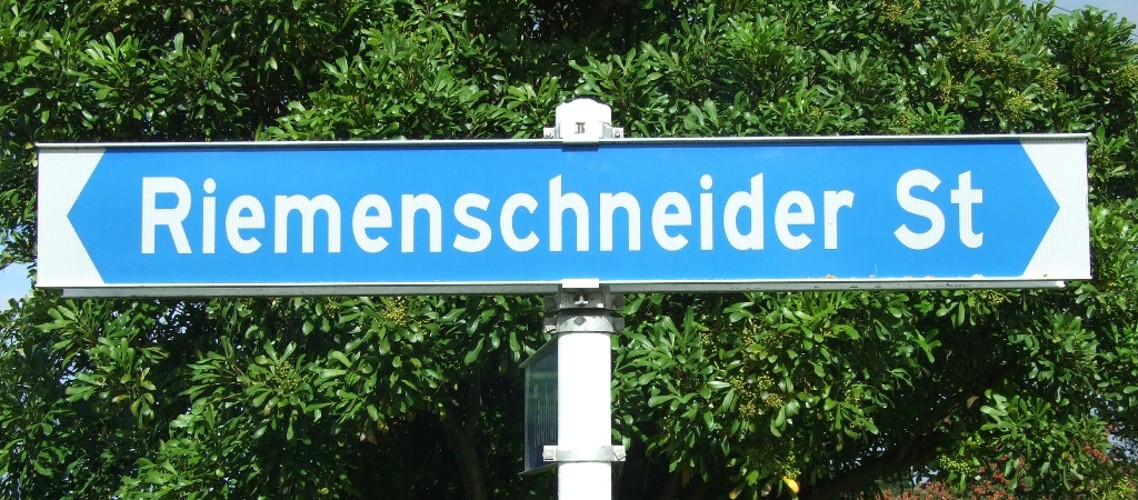 Riemenschneider Street (2017). Mike Gooch. Word on the street image collection.
Riemenschneider Street (2017). Mike Gooch. Word on the street image collection.
 Riemenschneider Street (2017). Mike Gooch. Word on the street image collection.
Riemenschneider Street (2017). Mike Gooch. Word on the street image collection.
When the township of Manaia was surveyed in 1877 it was laid it out in a very deliberate grid pattern. Riemenschneider Street is one of the only roads running east to west that does not have a Māori name.
Johannes Friedrich Riemenschneider arrived in New Zealand in 1843, aged 26. We know a lot about his life here thanks to the work of Professor Peter Oettli, a specialist in medieval German literature. In the course of his research for a biography of Riemenschneider, Oettli translated a vast collection of letters sent by Riemenschneider to his employers in Germany. This was no simple task, he was an enthusiastic letter writer. One of his letters was 160 pages long and included 18 pages of footnotes!
Riemenschneider was first sent to Nelson, but on finding the area already well served for spiritual guidance, shifted to Taranaki. In 1846 he established a mission station in the small coastal settlement of Wārea. He lived simply, and was generally well-liked and respected by his Māori congregation. His somewhat lonely existence on the Taranaki coast was relieved in 1849 when he married Catherine Garland Woon, the daughter of another missionary, Reverend William Woon.
In 1860 Taranaki was in turmoil and Riemenschneider found himself caught between loyalty to his congregation and the demands of government officials. In the end he chose to move, first to the safety of Nelson, and then to Port Chalmers in Otago. He died there in 1866, his headstone and grave railing were paid for by his Māori parishioners.
This story was originally published in the Taranaki Daily News.
Please do not reproduce these images without permission from Puke Ariki.
Contact us for more information or you can order images online here.